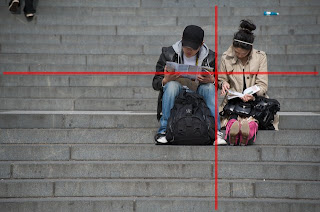Saturday 30 May 2009
Tuesday 26 May 2009
Happy Birthday Nobuyoshi Araki
http://finenudes.blogspot.com/2009/05/happy-birthday-nobuyoshi-araki.html
"A photographer who doesn’t photograph women is no photographer, or only a third-rate one. Meeting a woman anywhere teaches you more about the world than reading Balzac. Whether it be a wife, a woman encountered by happenstance, or a prostitute, she will teach you about the world. In fact I build my life on meeting women and I have hardly read a book since primary school."
Nobuyoshi Araki official site:
Sunday 24 May 2009
Project 14: vertical and horizontal frames
Take 20 photographs as vertical first. Then take the same subjects as horizontal again.
***
I didn't do this project properly. I was supposed to take 20 portrait format photographs and study the photographs before taking the landscape format photographs of the same subjects. However, I thought it would be difficult to take the photographs of the same subjects after I went back home because the light condition would change and more importantly it is impossible to remember the place where I took the original photographs in this large park. Therefore, I decided to change the procedure as follows: First, look for a subject with the portrait format frame in mind and take a photograph of the subject in the portrait format. Then immediately after that, take another photograph of the same subject in the landscape format. The results are as follows:
1.
 2. landscape format version
2. landscape format version 3. landscape format version
3. landscape format version 4. landscape format version
4. landscape format version 5. landscape format version
5. landscape format version 6. landscape format version
6. landscape format version 7. landscape format version
7. landscape format version 8. landscape format version
8. landscape format version 9. landscape format version
9. landscape format version 10. landscape format version
10. landscape format version 11. landscape format version
11. landscape format version 12. landscape format version
12. landscape format version 13. landscape format version
13. landscape format version 14. landscape format version
14. landscape format version 15. landscape format version
15. landscape format version 16. landscape format version
16. landscape format version 17. landscape format version
17. landscape format version 18. landscape format version
18. landscape format version 19. landscape format version
19. landscape format version 20. landscape format version
20. landscape format version 21. landscape format version
21. landscape format version
When taking the portrait format photographs, I do find the tendency to put the main (dominant) subjects lower than the centre, as the text book points out. However, it is probably true that the same thing can also be said when taking a photographs in the landscape format. Since the portrait format is vertically longer than the landscape format, the tendency looks more obvious.
As for the landscape format, it is certainly true that I was looking for subjects whose shapes were vertically long. Then I tried to compose the subjects so that they fit in the landscape format frame. Some worked better than others. I don't think tree trunks work (1, 2, 3, 4, 8, 10, 12, 13 and 15) (Yes, I took too many photographs of trunks). The subjects which can be represented by points rather than vertical lines work better (7, 9, 14, 17 and 20) as well as the ones which can be represented by areas (5, 6, 11, 16, 18, 19 and 21).
Project 13: the golden section
Take 6 photographs by composing them according to (approximately) the Golden Section (the rule of the thirds).
***
1.

The red sign is placed so that the distance from the left edge is roughly twice as long as the one from the right edge and the distance from the bottom is roughly twice as long as the one from the top.
The position of the St. Paul's Cathedral from the right edge is roughly one third of the horizontal length of the frame.
3.
The statue is placed at the one third line from the left. The top edge of the background stone wall also corresponds to the one third line from the bottom.
The position of the flower is almost at the point where the one third line from the right and top intersects.
Again the position of the couple is almost at the point where the one third line from the right and top intersects.


The position of the statue corresponds to the one third line from the right.
The position of the door knob is almost at the point where the one third line from the top and right intersects. In addition, the horizontal line pattern on the door almost corresponds to the one third line from the bottom.
Subscribe to:
Posts (Atom)



































